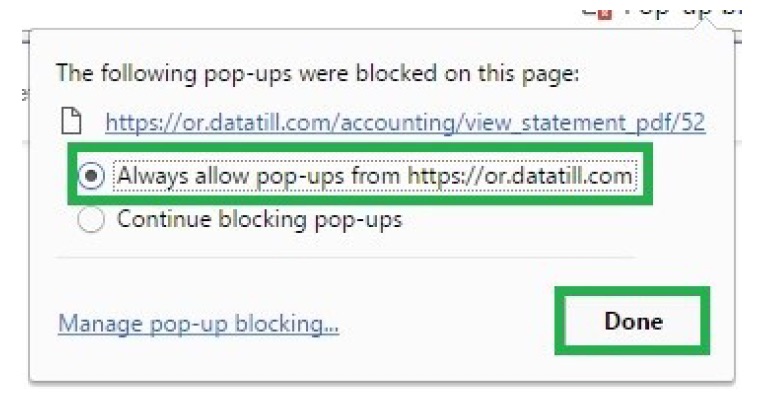Sending the customer a statement:
There are two ways for customers to receive their statements. They can either log into their customer area and pull a statement themselves or they will phone you and ask you to send them a statement. If the customers phones you asking for a statement, remind them that they are able to do this themselves and walk them through the process.
Before you send the statement to the customers, update the age analysis. When this is done, click on the “View Statement” button and just quickly check that there isn’t anything weird on the statement. Remember, if you don’t understand what is happening on the statement, how do you expect the customer to understand it.

Once you have viewed the statement and feel confident about sending it on to the customer, click on the “Email Statement” button. Another pop-up screen will now appear:

| Email Address:
|
The email address should pull through automatically. If there is more than one email address, the system will send it to both addresses. Should you want to send it to a completely different email address, you are able to edit the section and add the email address you want to send the statement to. Once you are happy with the email address this will be sent to, click on the send button. |
| Related Helpdesk Ticket: |
If the customer logged a ticket asking for a statement, you are now able to choose the relevant ticket in this section. Once you have chosen this ticket, click on the send button. |
But I can’t view the customer’s statement?
If it happens that you are not able to view the customer’s statement, look in the top right corner. It might be that your computer is blocking the pop-ups. Scroll to the top of the page until you can see the URL of the website (If you do not know where or what this is, you should not be working in a WISP). Click on the little icon in the green section.

Once you have clicked here, you should see the following pop-up message. Choose the “Always allow pop-ups from …” and then click “Done”.

Click on the “View Statement” button again. This time, the statement should open in a new tab of your browser. If this does not happen, try the process again or call for reinforcements in the technical department.
